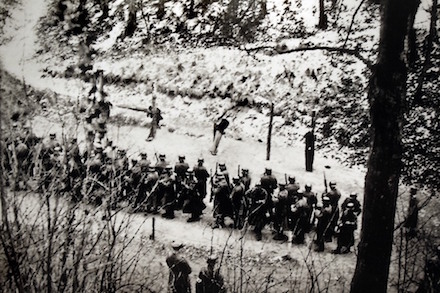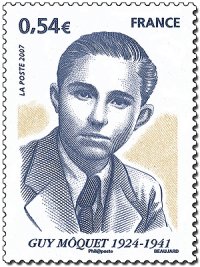Left-wing intellectuals Georges Politzer and Jacques Solomon were shot at Fort Mont-Valerien on this date in 1942 for their exertions in the French Resistance.
Both numbered among interwar France’s great radical intellectuals: Politzer, a Hungarian Jew nicknamed the “red-headed philosopher” and and Solomon, a Parisian physicist, both numbered among interwar France’s great radical scholars.
The red-headed philosopher hung with the likes of Sartre, taught Marxism at the Workers University of Paris, and critiqued psychology. (A few of his works can be perused here.) Solomon, son-in-law of physicist Paul Langevin, made early contributions to the emerging field of quantum mechanics.
Politically both were Communists and supporters of the anti-fascist Popular Front; with the onset of German occupation, they carried their activism into the French Resistance.
They were arrested (separately) in March 1942 and executed (together) with other Resistance hostages on the outskirts of Paris.
On this day..
- 1701: Captain Kidd
- 1936: Adolf Seefeldt, Uncle Tick-Tock
- 1996: Yevgeny Rodionov, Chechen War martyr and folk saint
- 1699: Nikol List, Golden Plate robber
- 1865: Stanislaw Brzoska, Polish patriot priest
- 1991: Ignacio Cuevas, Huntsville Prison Siege survivor
- 1876: Four for the Mutiny on the Lennie
- 1892: Frederick Bailey Deeming, Bluebeard
- 1673: Thomas Cornell, on spectral evidence
- 1906: Ivan Kalyayev, moralistic assassin
- 1832: Samuel Sharpe, "I would rather die upon yonder gallows than live in slavery"
- 1498: Girolamo Savonarola, as he had once burned vanities








 The youngest, 17-year-old
The youngest, 17-year-old